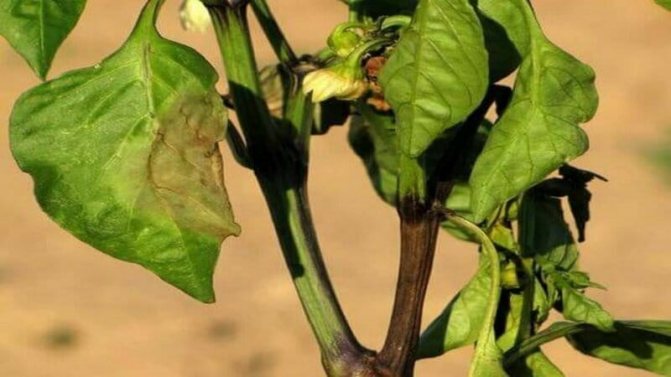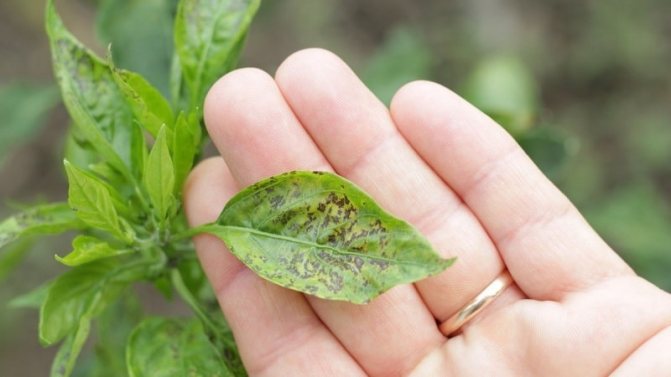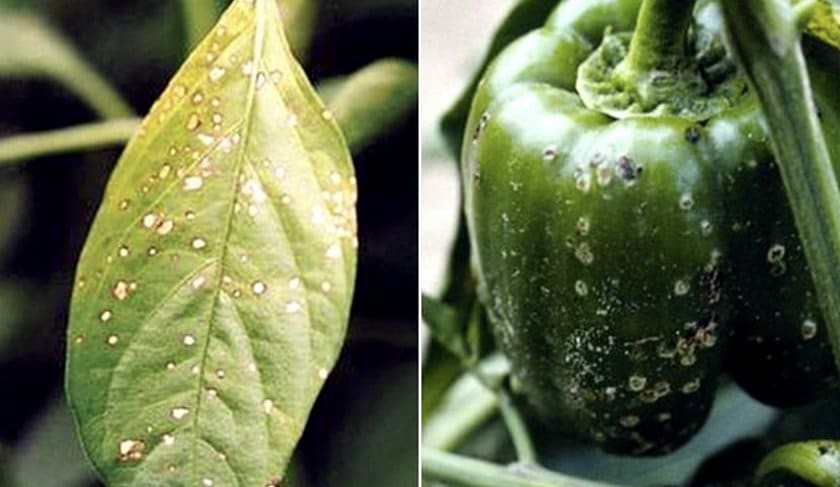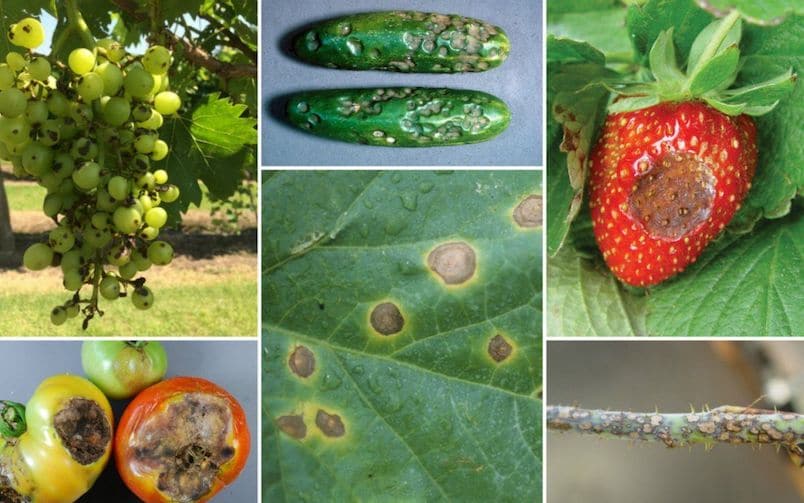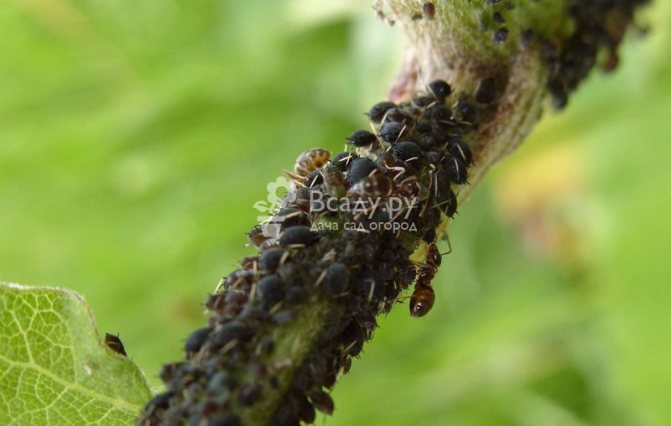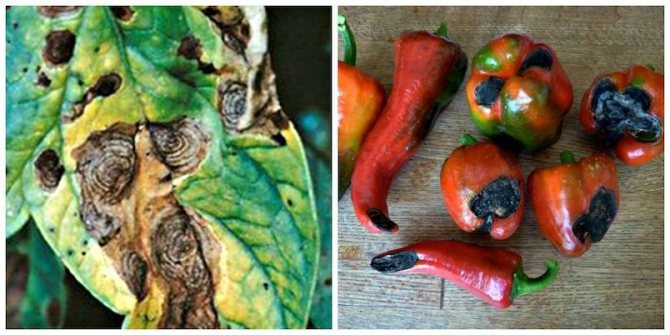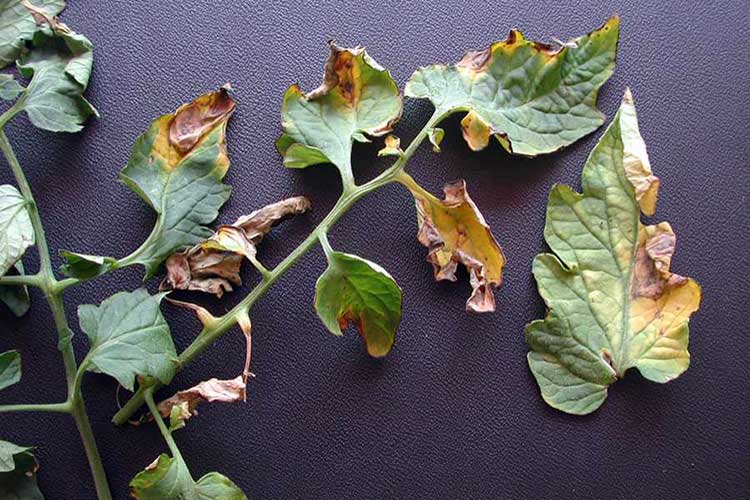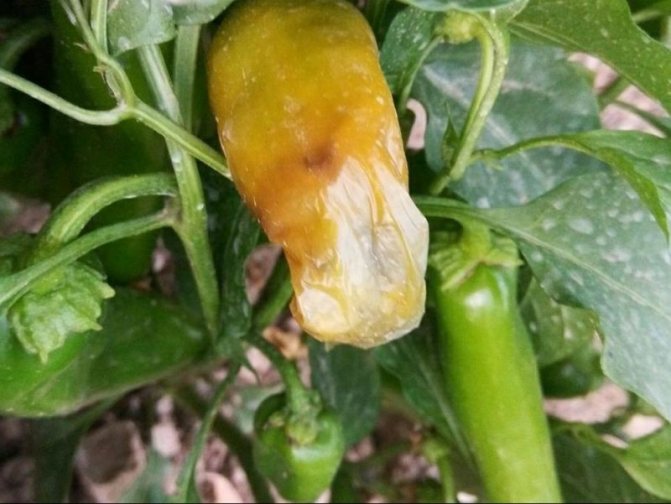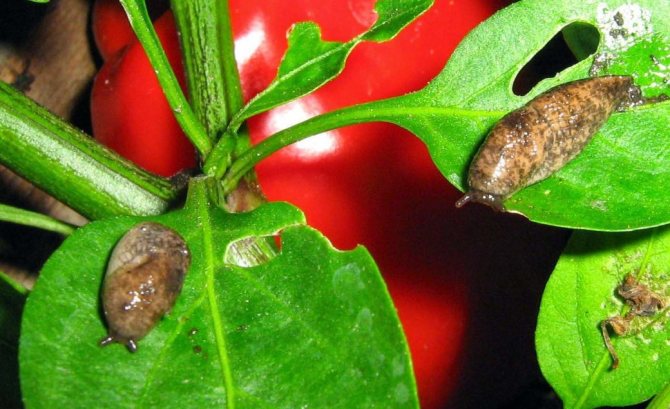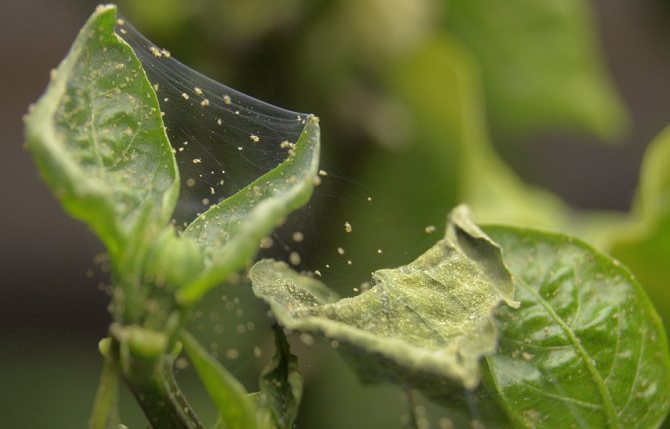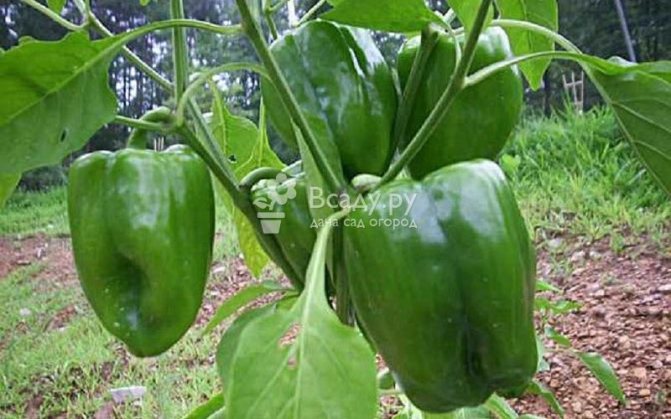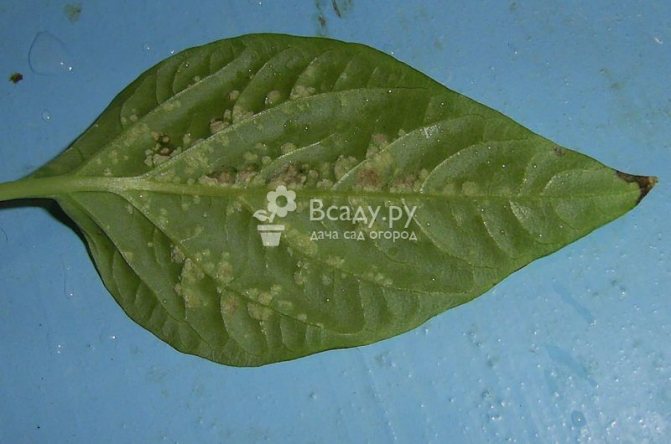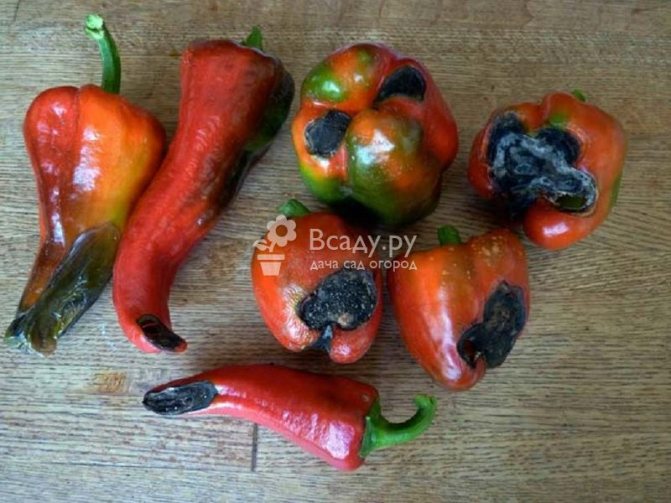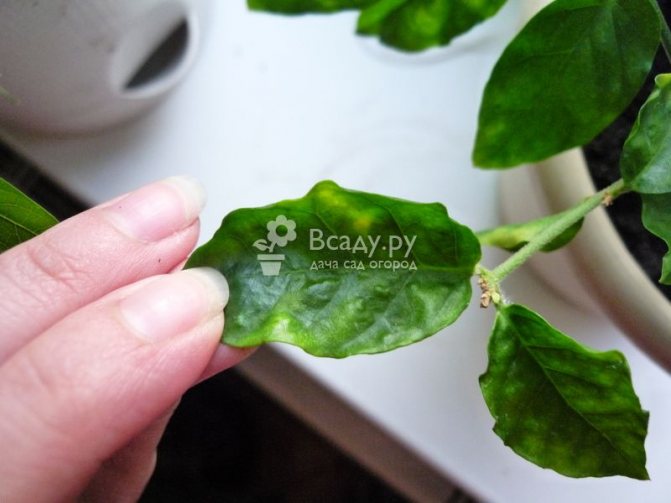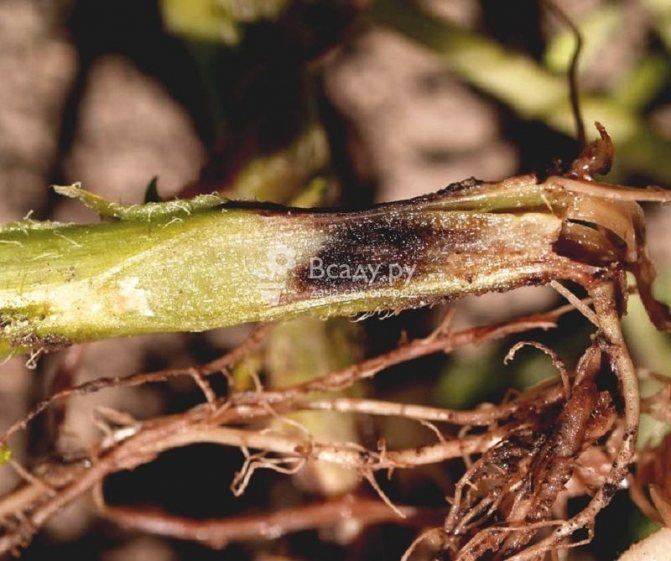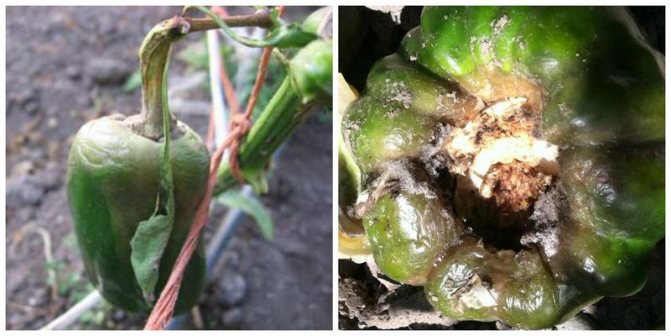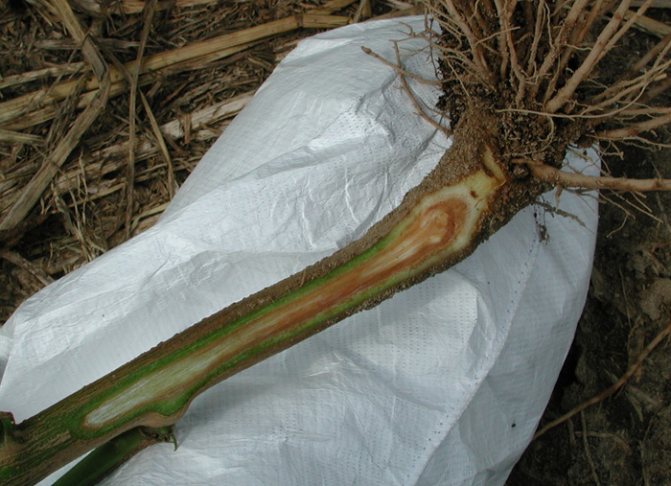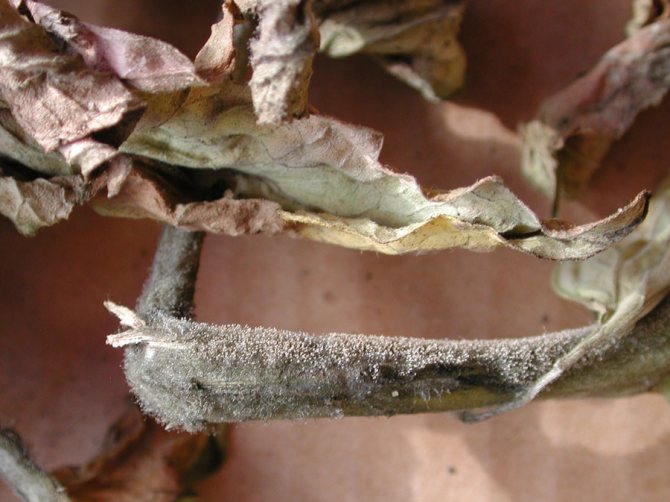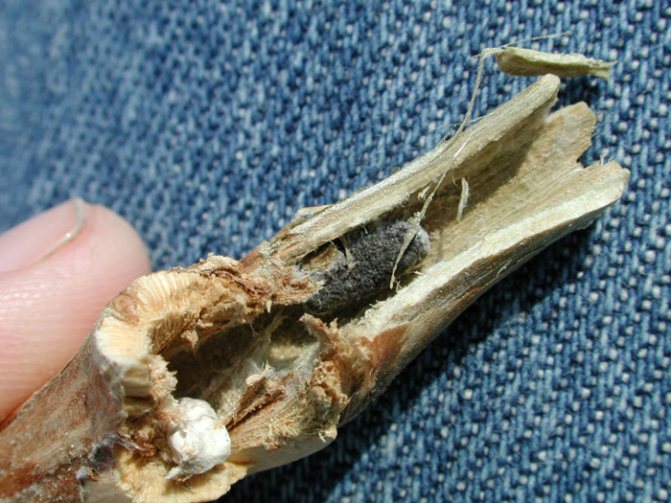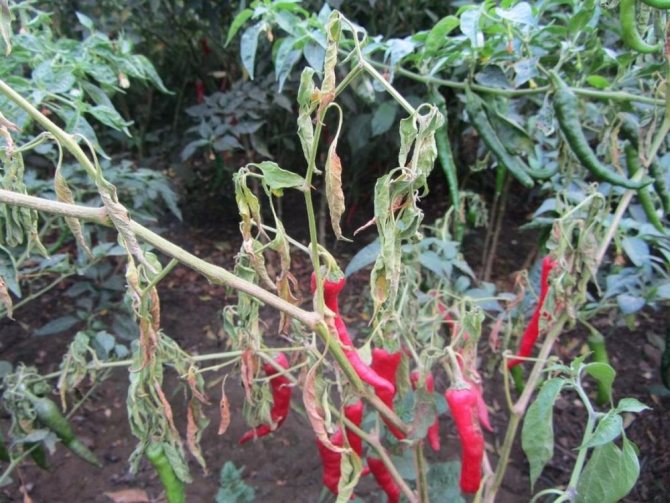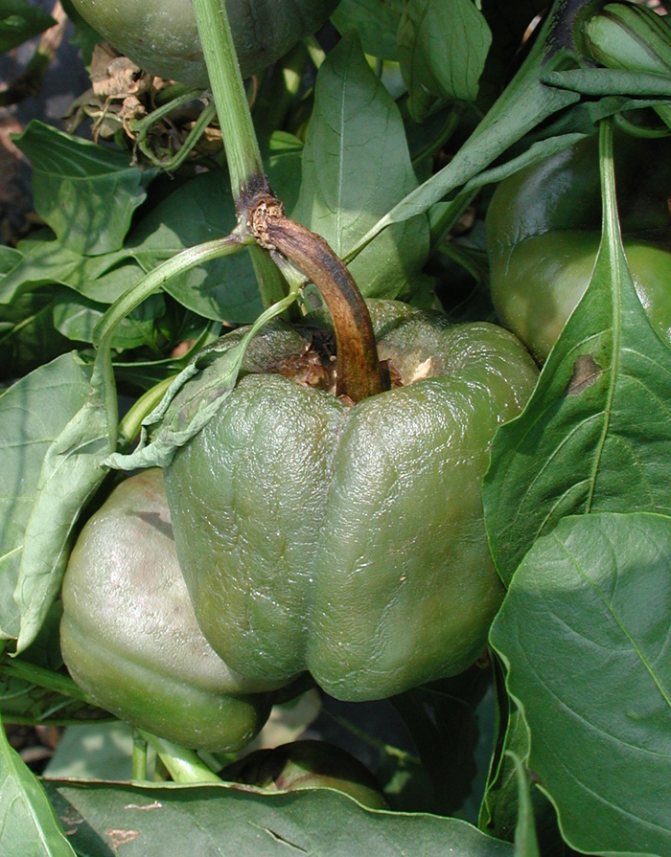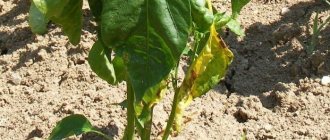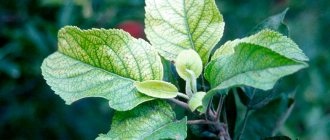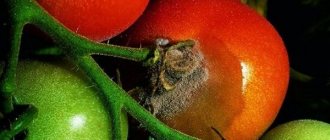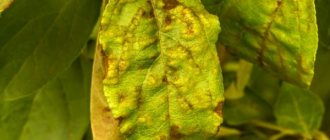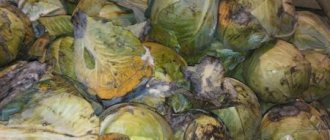Author rating
The author of the article
Yakov Pavlovich
Professor, Head of the Department of Vegetable Growing
Articles written
153
Many gardeners grow bell peppers on their backyards and dachas along with other vegetable crops. But at the same time, it is not always possible to get a good harvest. This culture is considered quite capricious. And any inconsistency in growing conditions reduces its immunity. Therefore, you should study the diseases of sweet bell peppers in order to be able to recognize the signs of damage.
Blackleg
Blackleg - most often these diseases of pepper affect seedlings that are grown in greenhouse conditions. A wide variety of pathogens provoke blackleg, which spread very quickly in the ground, and can also be stored in the remains of materials from other plants. The disease can also occur due to the fact that the greenhouse is not sufficiently ventilated, or the seedlings are planted too close to each other. Plants simply do not have enough air, a greenhouse effect appears - an excellent atmosphere for the spread of diseases. As a rule, you can find a black stem by noticing that the stem has begun to gradually rot and dry out. At first, the disease is concentrated in the lower part of the plant, and then quickly spreads throughout the trunk. Prevention consists in treating both the plant and the soil with a solution of potassium permanganate before planting, this will not take much time, but it will help to save the plant from such an ailment. Waterlogging of the soil must not be allowed. If the plantings are too close to each other, they should be thinned out, leaving the most powerful bushes.
Root rot
Root rot is very common in the southern regions and almost never in the middle lane and to the north.
A group of diseases caused by either pathogenic fungi or bacteria.

Favorable conditions for the development of the disease
They appear with thickened plantings and poor soil ventilation. Root rot can occur when the concentration of the fertilizer solution applied under the root is too high. As a result, a root burn occurs, necrosis and cracks form on them, through which pathogens penetrate inside.
Other reasons are severe waterlogging and frequent rains when the soil does not have time to dry out; mechanical damage when loosening.
Rot affects peppers throughout the growing season.
How does the disease manifest on peppers
- In the bushes, despite the moist soil, the leaves begin to wither and dry. Depending on the degree of waterlogging, they either dry out or rot.
- The root collar licks and rots, spots of pinkish or white bloom sometimes appear on it.
- Diseased peppers are easily removed from the ground, there is practically no soil on the roots. The roots themselves are brown, sometimes slippery to the touch (not always), easily broken (healthy roots are white and elastic).
Gray rot
Gray rot is a disease of peppers that appears first in the lower part of the stems. The gardener, upon examination, discovers abundant brown spots, which eventually become covered with a gray bloom. The fungus is stored for a very long time, it is difficult to remove it, unless you use special professional means. Also, the fungus is very easily transferred by insects, in windy weather, or through water.The fungus develops especially at high temperatures and high humidity. It develops very actively and affects bushes. To a greater extent, gray rot can most often be found on bushes that are grown in greenhouse conditions.
To combat gray rot, experienced gardeners offer several basic methods at once:
- it is important to process seedlings in a timely manner, it is also recommended to dive on time. The room in which the seedlings grow should be well ventilated, and the seedlings should not be planted too close to each other, as this can provoke a disease
- as soon as the pepper bushes begin to form, they must be chalked or crushed activated carbon should be used. Gardeners say that this is a really effective remedy for protecting seedlings from bacteria and fungi.
- the affected plants must be detected in time and removed immediately. To do this, the gardener must make a daily inspection of the plants and check them for the occurrence of fungal diseases, putrefaction or stains.
- also in order to protect plants from fungal diseases, garlic-based tincture is excellent.
Alternaria (brown spot, macrosporiosis)
Found in Siberia. Bulgarian pepper affects both in the greenhouse and on the street.
Causative agent - a pathogenic fungus that persists on plant debris and seeds.
Conditions for the appearance of the disease... Hot summers (above 25 ° C) with intermittent rain and abundant dew.
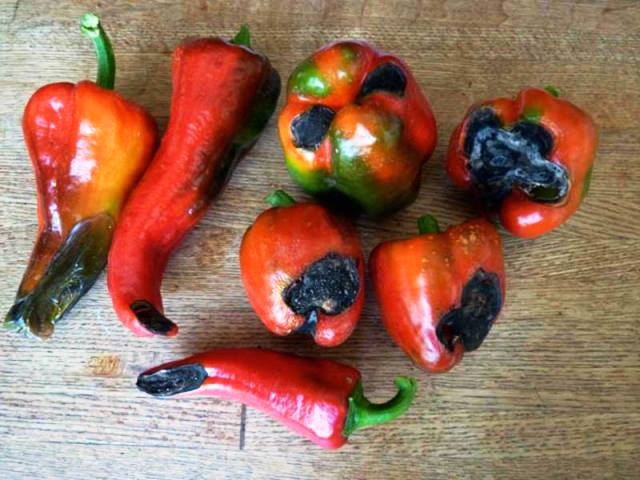

Signs of defeat
Leaves and fruits get sick. The disease starts on old leaves. Angular small specks of brown color appear along the veins, which gradually grow and merge with each other, covering the entire affected leaf. From the leaves, the lesion passes to the fruit.
On the peppercorns at the base, where the stalk attaches, a watery green spot appears, which subsequently grows, darkens and is pressed inward. Sometimes the stain may appear not at the stalk, but in the center of the peppercorn. The spot becomes brown, in the center it is lighter than at the edges. In advanced cases, areas with a black moldy bloom appear in the center of the spot - sporulation of the fungus. The fruit dries up.
Control measures
Alternaria on sweet peppers is not as harmful as other types of spotting. It develops slowly, and when hot and dry weather sets in, its development stops.
When a disease appears, they are sprayed with copper preparations: Ordan, Abiga-Peak, Bordeaux mixture, HOM. Treatments are carried out depending on the weather. In rainy weather, it is treated 2 times with an interval of 10-14 days. With the onset of warm weather and the absence of growth, they are limited to one spraying.
Treatment with drugs Kartotsid, Ridomil Gold, Previkur, Kurzat.
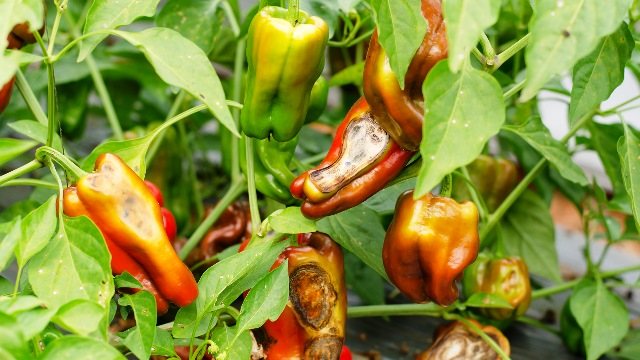

Prophylaxis
- Seeds must be pickled before sowing.
- The greenhouse is thoroughly ventilated so that there is no dripping moisture on the peppers, you cannot water the bushes with sprinkling.
Folk remedies... For prophylactic purposes, the bushes are sprayed with a pink solution of potassium permanganate or iodine (10 ml per bucket of water).
Pepper Diseases: Cladosporium
Cladosporium is perhaps another common disease that occurs on seedlings of peppers in greenhouse conditions. Cladosporium is spread by spores (which can be understood from the name of this fungal disease). These spores are very actively spread, getting on garden tools (hoes, rakes, shovels), as well as moved by the wind or through insects. The disease manifests itself in the form of pronounced brown spots, which are usually concentrated on the deciduous part. After that, a gray bloom appears, and if the disease is not detected in time, then this simply can then lead to the fact that the plant begins to rot from the stem.The fruits, if they had time to form by that time, also begin to rot very quickly.
As soon as the gardener noticed the very first signs of the disease, he is advised to reduce soil moisture, as well as ventilate the greenhouse daily. The bushes are sprayed with special antifungal drugs, which are purchased in specialized stores for gardeners.
Pests
In the open field and in the greenhouse, bell peppers can infect phytophagous insects. Pests cause significant damage to vegetable growing, and with a sharp increase in the population, they can completely leave the gardener without a crop.
Nematodes
Nematodes are roundworms. They parasitize many plants, including sweet peppers.
There are three types of nematodes: root, stem and leaf. Most often, nightshade crops are affected by a pest that parasitizes the roots of plants.
Spread occurs through contaminated soil, soil and seed. It is more common in greenhouses due to the difficulty of maintaining crop rotation.
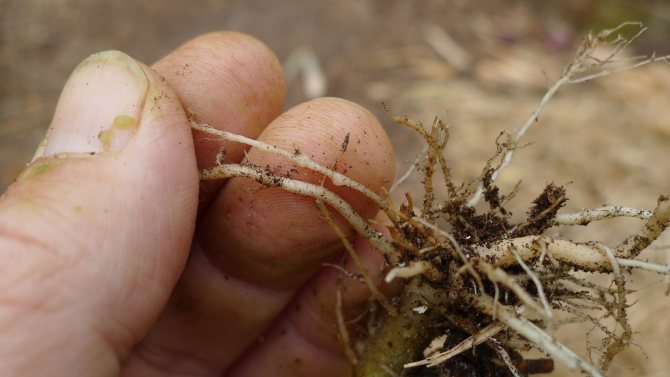

Peppers affected by the pest stop developing, chlorosis appears on the leaves. When a diseased plant is removed from the ground, galls can be found on the roots, which are spherical thickenings.
There are currently few effective remedies against nematodes. Traditional insecticides and fungicides do not affect the parasite, as it belongs to roundworms.
In the fight against the pest, the chemical Vidat or the biological product Nematofagin Mikopro is used.
Observance of crop rotation, checking the roots of plants at the end of the season, using mustard powder (half a glass of mustard per one well), adding Lepidocide or Bitoxibacillin to the soil will help to avoid the accumulation of nematodes.
Spider mite
Favorable conditions for the appearance of a spider mite on pepper are dry, hot weather with temperatures above +30 degrees. Most often, the pest is found in greenhouse conditions or in open ground in the south of the country.


The parasitic population of the spider mite manifests itself on the plant by such signs as yellow specks on the leaf plates, a gray coating on the inside of the leaves that looks like dust, a barely noticeable cobweb on the aerial parts of the pepper.
Against the arachnid pest, Vermitic, Karbofos, Anti-tick, Sunmite and other acaricides are used. 3 treatments are carried out with an interval between each of 7-10 days. It is advisable to alternate drugs so as not to cause resistance in the parasite.
Aphids
Aphids are most often found in greenhouse conditions. The spread of pests is the soil infected with their larvae.
Ants can contribute to the reproduction of the aphid population. The latter feed on the sweet honey secreted by insects and act as their natural protectors. When fighting aphids, first of all, you need to destroy all anthills on the garden plot.
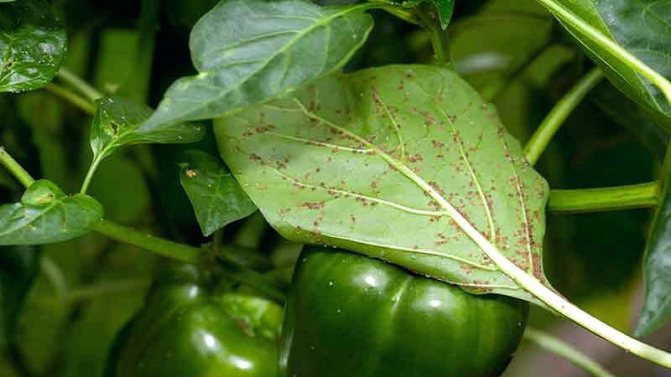

The pest is a carrier of viral diseases that threaten the complete death of plants.
When pepper is affected by aphids, a sticky pad appears on the vegetative organs, the leaf plates curl, the buds do not open, and the flowers that appear are deformed and fall off.
For the destruction of pests, insecticides such as Intavir, Actellik and Karbofos are used. In greenhouses, peppers are treated with Clipper. From biological products Fitoverm, Entobacterin, Aktotsid are used.
Caterpillars of the scoop
Caterpillars feed on leaves, stems, and pepper roots. In the daytime, they hide in the ground, with the onset of dusk they creep out.


Moths attack plants in greenhouses, hotbeds and open field. Increased moisture contributes to the rapid increase in the pest population.
In the fight against caterpillars, scoops use the preparations Gerold, Alatar, Decis Profi, Initiator 200.
Thrips
The main signs of the appearance of thrips on pepper are deformation of the leaf plates, the appearance of yellow spots on the leaves, and the falling off of flowers.
To destroy the pest, peppers must be treated three times with an interval of 10 days with such preparations as Aktara, Fitoverm.
Bedbugs
The pest bites through the fruits of the pepper and injects poisonous juices. Pepper becomes unsuitable for food, as it acquires a bitter taste and a specific smell, and quickly decays.
Insecticides used against pests such as whitefly and aphids are effective against bedbugs.
Nightshade miner
The pest affects bitter and sweet peppers, both in open and closed ground. The danger to plants is represented by the larvae of the nightshade miner. They are embedded in sheet plates, gnawing through passages in them.
Favorable conditions for the development of the pest - temperatures from +25 to +30 degrees.
Against the nightshade miner on peppers, such remedies as Spinosad, Vermithek, Varant, Tianid are effective.
Slugs
Favorable conditions for the reproduction of slugs are temperatures up to +25 degrees and high humidity. The pest eats at night.
Molluscs gnaw through the leaf plates, leaving holes of different sizes on them. The fight against them is carried out with the help of drugs Slizneed, Thunderstorm Meta, Ferramol.
Wood ash or hydrated lime will also help get rid of slugs. Substances are sprinkled on the soil around the pepper bushes.
Wireworm
These pepper pests are the larvae of the click beetle. They live in the ground at a depth of 10-12 cm, feed on the roots of nightshade and other vegetable crops.
Effective methods of combating wireworm are the use of drugs and sowing siderates. For preventive purposes, Zemlin and Vallar are used.
It is possible to remove the pest with the help of siderates only the next season after its detection.
After harvesting and removing plant residues from the site, rye or mustard is sown. They serve not only as fertilizer, but also as a wireworm control. In the spring, after the emergence of siderat seedlings, the site is dug up, after which the seedlings can be planted.
Late blight
Late blight is the most common disease that affects plants of the Solanaceae family. The fruits become covered with brown spots, which then affect the whole plant, its green and root parts. Wet spots also appear on them, while the crop can be immediately eliminated, it is not suitable for human consumption. To prevent phytosporosis, you can use the following methods:
- improve crop rotation, monitor their quality
- bushes should be treated with drugs against such a fungus, which is called late blight
- Affected plants must be destroyed immediately after detection. It is advisable to simply burn them.
The disease also manifests itself not only as a result of a fungal infection, but also as a sign that the plant lacks some micro- and macroelements, and because of this, its immunity is becoming weaker. therefore, preventive feeding should be done more often using fertilizers based on manganese and iodine, potassium and copper, since it is these components that can enhance the plant's immunity, its stress resistance.
Fungal and mycoplasma ailments
These are dangerous diseases of pepper, and the fight against them must be carried out in advance. The very first ailment that every gardener faces is "black leg". This disease most often develops in poor lighting conditions, as well as high humidity. That is, when the seedlings are in boxes on the windowsill, the disease has every chance of developing. The fungus spreads along with infected seeds and soil. The root collar darkens and the plant dies.
There is also such an ailment as verticillary wilting. Plants affected by this fungus lag behind in growth, their leaves are very small, yellow spots appear on them. The ovary may not form at all or small, wrinkled fruits are tied. In this case, the vascular tissues are colored dark, and the small leaves remain dark green. However, it is not always easy to recognize pepper diseases. And the fight against them may not be effective enough. In particular, a disease such as fusarium wilting is very similar to the previous one. It affects seedlings and adult plants. In this case, the leaves turn yellow and fall off, the root system withers, the plants die.
A very common disease is septoria. It is a white spot that affects the stems, leaves and fruits of peppers. The activity of the fungus that causes this ailment increases at a relative humidity of 80% and an air temperature of +15. These are diseases of bell pepper, which are treated quite easily with the help of copper-containing preparations. The treatment must be repeated two weeks after the initial one.
Alternaria is very similar to the previous disease in terms of symptoms. This is dry spotting. Most often, the disease affects the stems and leaves. Brown and gray spots appear on them, the leaves dry out, and the stems die off. If the humidity in the greenhouse is high, then the spots are covered with a dark velvety bloom. Any bacterial diseases of bell pepper are curable only in the initial stages. At the first sign, you need to immediately treat the plants with a Bordeaux mixture or any copper-containing preparation. The treatment must be repeated after two weeks.


Pepper disease: fusarium
Fusarium - the onset of the disease is that the root system of the peppers is affected, and after that, all synthesis processes also freeze inside the stem. As a result, the plant at one point sheds all the deciduous part, and then dries up. In fact, leaf shedding and drying out are the most basic signs by which the gardener can understand that something is wrong with the plant, and that it needs help to eliminate the root cause of this condition. The disease can develop very actively if there is excessive soil moisture, or there has been a sharp temperature drop, for which the plant is simply not ready. It is best to remove the affected bushes immediately, and after removing the bush, treat the ground with an antimicrobial and antifungal agent. You can also use the same control methods that we listed when identifying phytosporosis.
Prophylaxis
To minimize the cost of treatment and plant loss, it is best to follow the basic rules of agricultural technology and prevent the appearance of the disease:
- buy and use high-quality hybrid seed varieties that are resistant to fungal and viral ailments from trusted manufacturers;
- before planting, it is imperative to treat seeds with drugs that increase the resistance of entrances to diseases (Immunocytophyte, etc.) and fungicides (Vitaros, Maxim, etc.) according to the manufacturer's instructions;
- introduce biological products into the soil that suppress potential pathogens (for example, Trichodermin);
- dive seedlings in a timely manner;
- regularly ventilate the room;
- observe the frequency and density of irrigation;
- remove affected seedlings and transplant healthy ones when signs of a disease that cannot be treated appear.
Before treating diseases of pepper seedlings, it is necessary to study in detail the stem, leaves and root system of the seedling in order to quickly identify the source of the disease and take appropriate measures, whether it is treatment with a biological product or the complete destruction of plants (with aggressive bacterial infection).
White rot
White rot is another disease that can be detected by the white bloom on the stems of peppers.Further, already inside the stem, all processes stop, dark-colored compaction appears, from which the fungus begins to manifest itself even more strongly, which destroys the entire plant. As a rule, white rot occurs due to excessive humidity in the air, as well as due to the fact that there has been a sharp drop in temperatures. As a preventive measure, watering the bushes with warm water at room temperature is suitable; if the bushes grow in a greenhouse, then the room must be ventilated daily, avoiding stagnation of warm air; if the affected plants were found, then it will already be problematic to save them, so the gardener is advised to simply remove them and destroy them so that the fungus from them does not get on to still healthy plants.
Causes of the appearance of diseases in a vegetable
Peppers are most vulnerable during cloudy and rainy summers. To begin with, the gardener must determine the cause of the onset of the disease in the pepper. Pepper diseases are not only caused by the local climate and weather conditions. Often diseases in pepper appear from improper care and growing conditions of the vegetable.
Various infections, fungi and viruses almost always infect a young plant at the initial stage of cultivation. It should be understood that the treatment does not always have the desired result and, most often, the vegetable culture dies. But, if the gardener sees the presence of the disease in time and knows how to treat it, it may be possible to save the crop.
Pepper diseases: powdery mildew
Powdery mildew is a fungal disease that is more common in peppers that are grown in greenhouses. As a rule, the gardener finds large spots on the upper leaves and on their upper parts, which after a while become covered with a whitish bloom. As soon as the disease begins to actively develop, the leaves are completely affected by such spots. They begin to deform, dry out, and acquire a completely unhealthy appearance. Eventually, the affected leaves fall off and the disease continues to attack the plant. As measures to combat powdery mildew, gardeners and agronomists highlight the following aspects:
- for growing peppers, it is necessary to create the most favorable conditions - they should be regularly watered and irrigated the upper part of the plant, but not overmoisten the soil
- if the gardener finds diseased parts of the plant, then it is best to remove them, and all the soil and the structure of the greenhouse must be disinfected
- after the disease has been detected, the gardener needs to assess at what stage of development it is present. If this is the initial stage, then the plant can still be saved by treating it with fungicides, both systemic and contact, both of which will be equally effective in this situation.
Verticillary wilting of peppers occurs during the period when the plant is just beginning to bloom. The leaves slow down in development, differ in their small size, on the lower part you can see growing spots. The leaves subsequently acquire a yellow tint, die off, and their massive fall is observed. The disease can develop if the air temperature exceeds 25 degrees, and the soil moisture is as low as possible. As for the measures, the following depends on the gardener:
- after the bushes have left the vegetative period, they must be removed from the site, as well as rid the soil of any plant residues, because various bacteria and fungi can also be stored in the residues
- the rules of crop rotation, which we mentioned earlier in this article, are also extremely important to follow in order to preserve the plant and protect it from wilting
- seedlings should grow only on treated and decontaminated soil
- during the growing season, the soil should be moistened by 75-80%
- for the prevention of wilting, you can use the biofungicide Trichodermin, which is excellent for disinfecting the soil and increasing the immunity of the plant.
Causes and factors of diseases of seedlings and adult bushes of pepper
To grow a healthy plant, it is very important to follow all the rules and regulations for growing seedlings. Incorrect conditions for keeping seedlings lead to a decrease in the immunity of the plant, which in the future affects the appearance of many diseases.
It is important to pay attention to:
- Soil and environmental temperature. The soil temperature should be from 22-27⁰С, and the air temperature up to 35⁰С.
- Pot size for growing seedlings. The larger the pot, the thicker the stem of an adult plant will be.
- Sufficient watering and no dry soil. Peppers are sensitive enough to moisture, so water the seedlings as they dry. Waterlogging of the soil is also not useful, as it will lead to root rot and delay in germination.
- Fertilizing seedlings. Failure to feed after the first leaf appears on the stem will slow the growth rate of the pepper and can stress the plant.
Failure to comply with the norms of the temperature environment, an excess of fertilizers and watering are often the main causes of diseases of pepper seedlings.
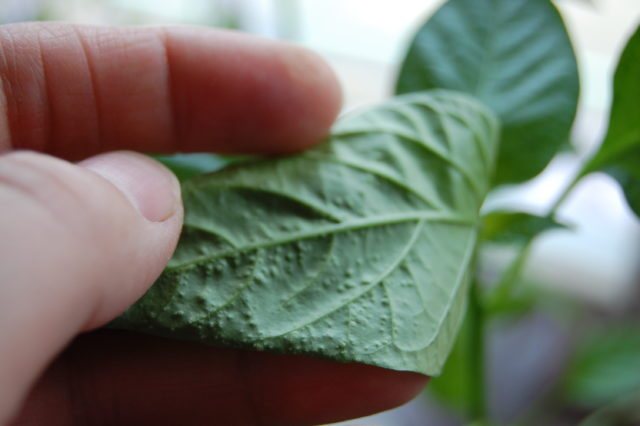

It is very important to follow all the rules for growing seedlings in order to grow a healthy plant.
Additional factors in the development of diseases are:
- using already infested pots and containers for growing seedlings;
- the use of soil with the spores of fungi, bacteria and larvae in it;
- the use of already infected seeds for growing seedlings.
If it was not possible to create all the conditions for growing the plant, and the pepper bushes nevertheless became infected, it is important to quickly recognize the disease and begin treatment as early as possible.
Bacterial diseases
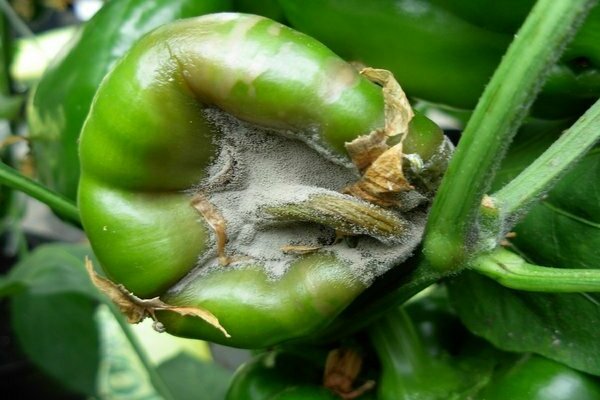

There are also some bacterial diseases that are also very common in pepper plants. Such diseases are very insidious, as they may not show any symptoms and signs, and then, one day, the plant simply dies. Symptoms can be similar to those of any other diseases that lead to both local lesions and widespread plant lesions, after which it should be removed from the site and destroyed, and the soil should be disinfected.
Bacterial diseases spread through insects, and also penetrate even the smallest holes, such as cracks in the stem. They can lead to decay of various parts of the plant, necrosis and burns, even to tumors. All this can be determined by visual inspection of the plant, but even then it will be clear that it is painful, and any measures should be taken to resolve this problem.
Black bacterial spot
A bacterial disease that manifests itself in the form of overgrowing spots that darken over time. As a result, the bush simply dies, as the disease "eats" it from the inside. As for effective measures, it is best to start with the treatment of the seed: the seeds are soaked in a manganese solution, due to which they are disinfected. The soil should also be disinfected by any available methods; periodically, seedlings can be treated with effective Bordeaux liquid. If the plant is already infected, then it should be removed from the site and disposed of so that bacteria from it do not spread to healthy plants.
Treatment of fungal diseases
All diseases of peppers in a greenhouse develop much faster, high humidity and planting density affect. Therefore, it is necessary to carefully observe preventive measures, remove all plant residues from the greenhouse, thoroughly disinfect the soil with a manganese solution (5 g per 10 liters of water). Try to use hybrids that are resistant to these diseases. Be sure to carry out seed treatment before planting. This can be a solution of zinc sulfate.Since pepper diseases develop very quickly in the greenhouse, it is necessary to remove the plants that have the first symptoms in time.
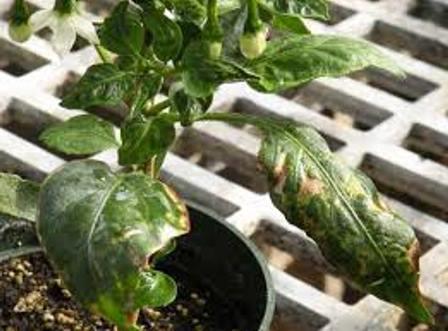

Lightning-fast bacterial wilting
Bacteria penetrate the vascular system of the plant, as a result of which it cannot feed and develop normally, which leads to death. To combat wilting, it is necessary to remove the infected plants immediately after detection, since the bacteria are very aggressive; the seeds are treated in a garlic-based solution before planting, then dried and planted in seedling pots; feeding should be done in accordance with the schedule; observe the rule that peppers cannot be planted in the same territories for two years in a row, since this violates the rules of crop rotation and agricultural technology.
Soft bacterial rot can very quickly affect the vascular system of the bush, which is why it dies after a short time. Signs of this disease are that the stem is hollow, and the leaves lose their color. To fight the disease, it is necessary to disinfect not only the seeds, but also the soil before planting, this is a very important rule; regularly ventilate the greenhouse, make sure that moisture does not stagnate after watering; all affected bushes are immediately removed from the site and burned.
Bacterial cancer of pepper develops in conditions of high humidity, and not only insects, but also the person himself, who processed healthy bushes with infected tools, can be carriers. Abundant brown spots appear on the peppers, gradually they merge into one spot, the plant becomes covered with a crust. Bushes that have managed to become infected should be treated with a solution of copper sulfate, as well as other drugs that have a high level of copper content. If the plant is deeply affected, then you should not try to reanimate it, but rather remove it immediately.
Streak (streak)
The causative agent is a virus. It affects fruits, petioles and stems mainly in the upper part of the bush.
Conditions of defeat... The virus manifests itself regardless of weather conditions. Most often, the disease occurs in the second half of summer. Insects spread it. Greenhouse peppers suffer more from streakiness.
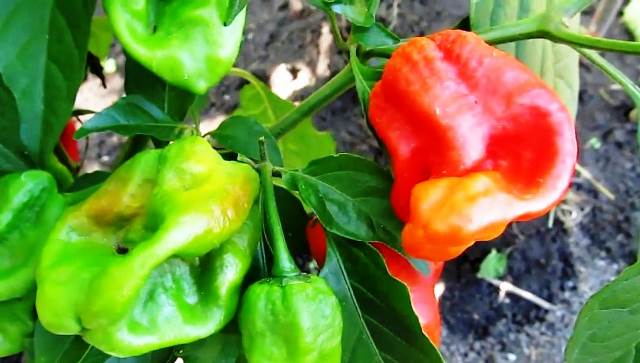

Signs of defeat
The first signs appear in July. Light gray or brownish streaks appear on the fruits, unevenly distributed throughout the peppercorn.
Streaks appear on stems and petioles a little later. As a result, they become bent, cease to fulfill their functions and break.
The tissue at the site of the lesion becomes corky, and the strokes themselves acquire a light brown color. The fruits are no longer edible.
Spread... The streakiness spreads quickly, and by August all plants in the greenhouse can become ill.
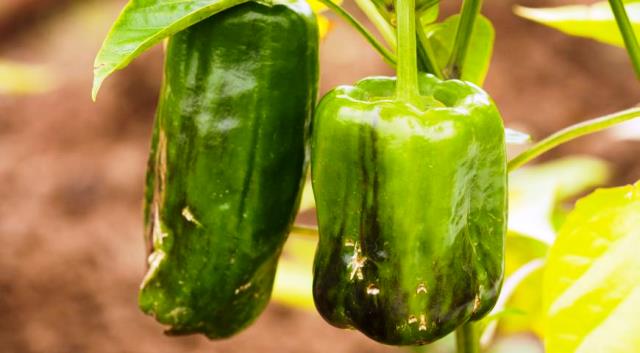

How to deal with the disease
Since the virus lives and multiplies inside cells, it is necessary to use only systemic drugs. The only drug that works against the virus is Pharmayod. But they cannot process the fruits, since the iodine contained in the preparation causes severe burns to the skin of the fruit and leads to its decay.
Therefore, processing is carried out only after removing all the fruits of technical ripeness. 5 ml of Farmayoda is dissolved in 10 liters of water and the plants are thoroughly sprayed. The processing is repeated after 10 days, after removing healthy fruits.
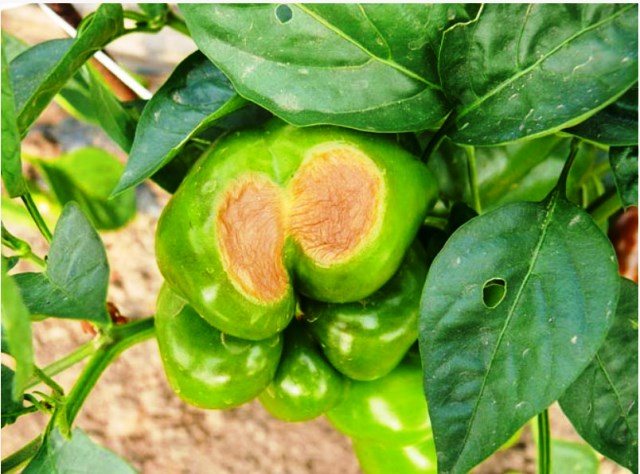

Since there is a high concentration of iodine in Farmayod, burns and death of leaves and plants are possible if the working solution is not prepared correctly.
Folk remedies
In the early stages of the disease, treatment with a pink solution of potassium permanganate is very effective. The treatment is carried out 3 times with an interval of 7 days. If the affected petioles and peppercorns continue to appear, then proceed to processing with Pharmayod.
Viral diseases
Viral diseases include tobacco mosaic, stolbur.Viruses spread through insects, therefore, first of all, you should focus on the fight against aphids, thrips and nematodes, and only thanks to these preventive measures can the spread of viruses among peppers be prevented. Seeds must be carefully processed before planting; when picking or transplanting into open ground, you cannot harm the plant and its root system. Also, periodically, plants are treated with special preparations to combat insect carriers of infection and viruses. Only thanks to such preventive measures is it possible to prevent diseases, since with viruses the plant cannot be preserved, it must be immediately destroyed.
Pepper seedling diseases
Seedlings are like a child who must be protected in every possible way and prevented from all possible problems. Therefore, it is important to know what you may encounter when growing pepper seedlings.
Typical diseases of pepper seedlings:
- blackleg;
- white, gray and apical rot;
- cladosporium disease;
- late blight;
- fusarium and sclerocinia;
- powdery mildew;
- verticillary wilting of pepper;
- black bacterial spot;
- lightning-fast bacterial wilting;
- soft bacterial rot;
- bacterial cancer of pepper;
- tobacco mosaic;
- stolbur.
Diseases in pepper seedlings often occur due to violation of the rules of cultivation and careless actions: a broken twig, a damaged root when cultivating the land or planting, a lack or excess of trace elements in the soil, improper watering.
In case of mechanical damage, you can adjust the cultivation technique and everything will return to normal. In case of an infectious disease, much more measures need to be taken, because they spread to other plants and, accumulating in the soil, can infect crops planted in this place for several years.
A more detailed description with a photo for each disease of pepper (including seedlings) is given below in the article.

